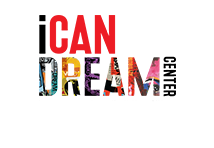
Augmentative and Alternative Methods of Communication (AAC)
AAC is often utilized by children and adults who cannot rely on their speech/voice some or all of the time due to congenital (present from birth) and/or acquired disabilities (e.g., traumatic brain injury). Some of these conditions include autism, genetic syndromes, cerebral palsy, hearing impairment, disease, stroke, or head injury. AAC is multimodal, which means that it permits individuals to use every mode possible to communicate (e.g., speech, gestures, manual signs, visuals, and/or vocalizations).
Types of AAC
The most common types include pictures, photographs, American Sign Language, gestures, and voice output applications that can be downloaded to tablets and electronic devices. It is important that you know what type of AAC device/system your child is using. Also, know where your child is at with the use of AAC. For example, if your child is using a voice output AAC device are they using single words or are they using sentences to communicate (e.g., are they pointing to “more” or are they creating a sentence “I want more bubbles please”).
How can I incorporate AAC use at home?
It can be challenging to figure out in what ways as a parent you can incorporate the use of AAC into your child’s every day at home. The most common advice from Speech-Language Pathologists (SLPs) is to teach the use of the AAC device in the same way that you would teach your child to speak. If both you and your child are new to the AAC system, it is important that you first familiarize yourself with it. For example, if your child is using a voice output system, look at the symbols and familiarize yourself with the location (e.g., are they on the first page or do you have to click something beforehand in order to get to the specific food options).
Next, model AAC use around your child. They need to see others use the AAC system around them in order to be motivated to use it themselves. If your child is using sign language, sign along as you are speaking to them. (e.g., if you are giving him/her cookies and you see them pointing to the bag or reaching for it because they want more, model “more” in sign and say “more” “more cookies”). Or if your child is using pictures, show them pictures as you say the word (e.g., if your child wants a cookie show them a picture of a cookie as you say the word “cookie”).
How can I incorporate AAC use in conversation?
Ask open ended questions, avoid questions that your child can respond with “yes” or “no”. Ask them questions like: “What color do you want to wear?” “What kind of juice do you want?” . Engage in activities in which you can teach them action words, and what better way to do that then with play! For example, pretend you are an animal and ask them “What animal am I?”. Or you can engage in active reading and ask them “What is Cinderella doing?” and they can respond “She is dancing”. Or ask them “What did you do at school today?” and have a conversation about how your day and their day went. Lastly, always give them time to answer! It can take a while to find the picture, symbol or think of the gesture especially if it is not one they use often. Therefore, give them time to respond and ask if they need help if you see that they are struggling.
